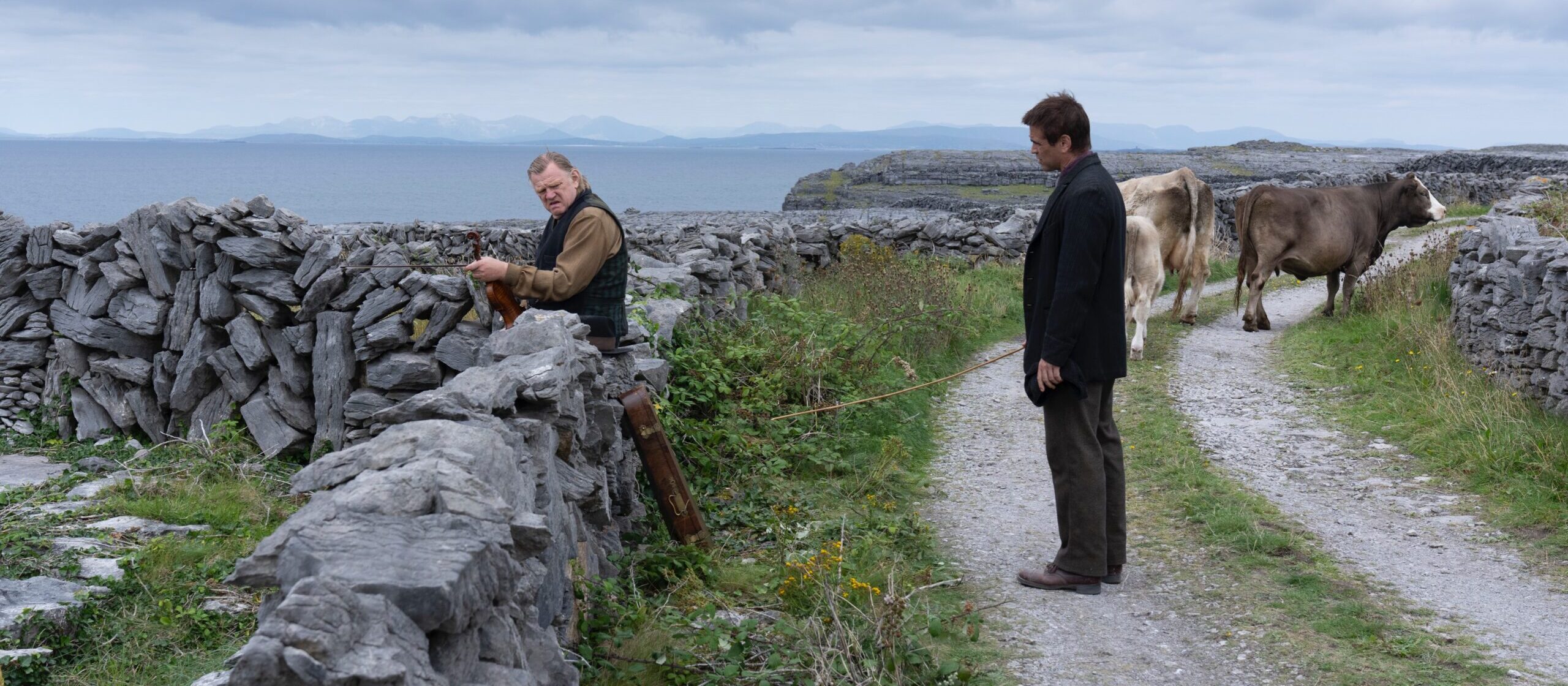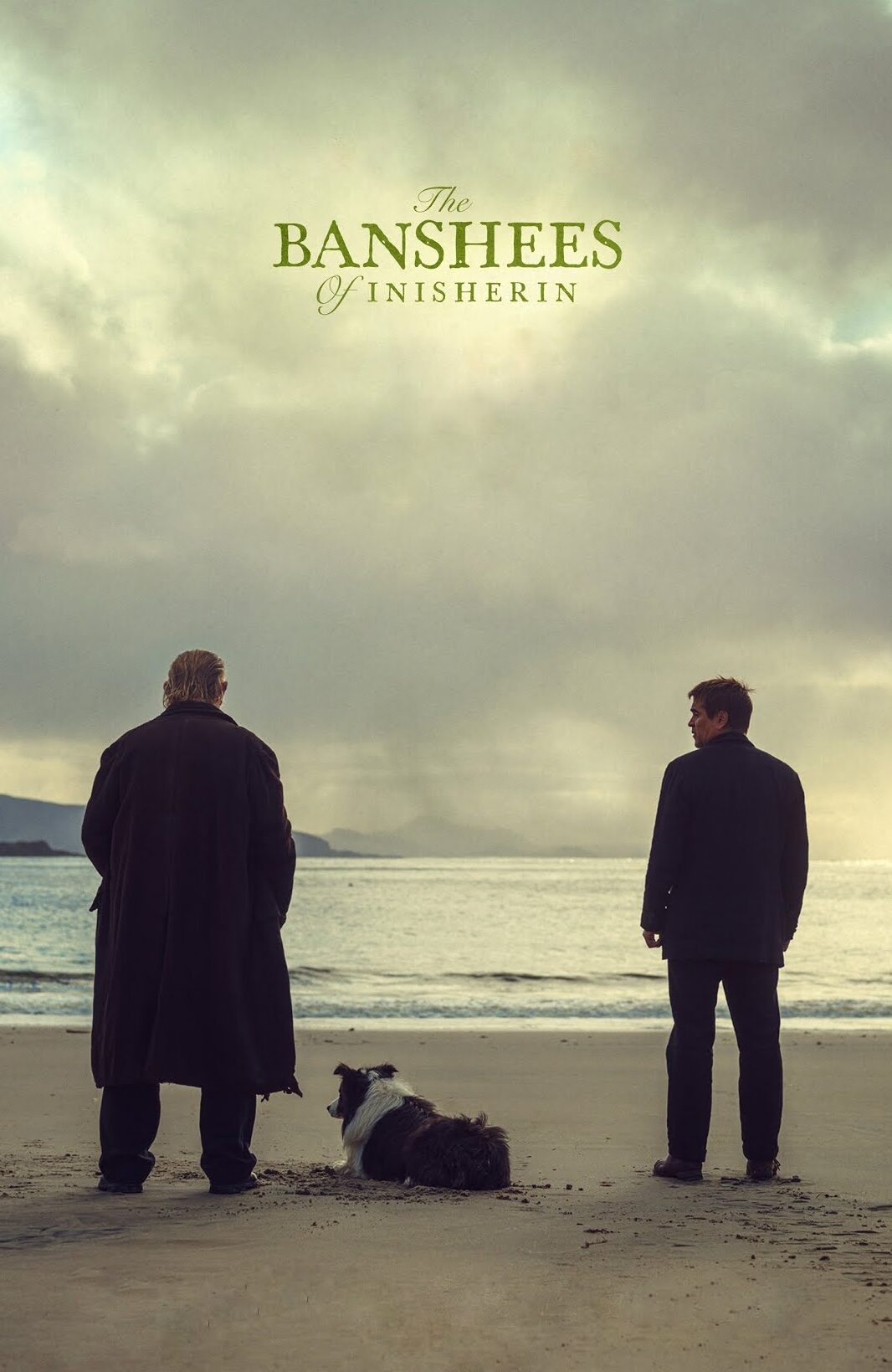

“Do you think God gives a damn about miniature donkeys?”
“I fear He doesn’t. And I fear that’s where it’s all gone wrong.”
Centering on the suddenly soured friendship of two lifelong pals, Martin McDonagh’s The Banshees of Inisherin begins as a pastoral comedy before evolving into something much darker, its playful tone eventually subsumed by the tainted shadow of an ongoing tragedy. Set in 1923 on a fictional Irish island, where the raucous sounds of the Civil War carrying across the waves to the quaint town provide a framing metaphor, the story hinges on the late-life crisis of Colm (Brendan Gleeson), which sees the aspiring folk musician try to cut ties with dimwitted herdsman Pádraic (Colin Farrell) in order that he may spend his remaining days composing a piece of music that will be remembered generations hence.
It’s been years, decades even, that the two have spent their afternoons in idle chatter over pints at the local bar, and so it comes as a surprise to everyone—Pádraic’s sister Siobhán (Kerry Condon), barowner Jonjo (Pat Shortt), village idiot Dominic (Barry Keoghan), the local priest (David Pearse), but most especially Pádraic—when Colm one day decides, seemingly out of the blue, that he no longer wishes to associate with his friend. Pádraic is understandably upset. His simple mind cannot comprehend Colm’s urge to forsake a loved one for the hope of being immortalized through art, let alone his insane compulsion to chop off his own fingers as a sign of his commitment to purging Pádraic from his life. Does Colm want to be left alone, or does he just want to die? Or does he simply need an excuse for not fulfilling his ambition? And what does this mean for Pádraic, who values his friendship with Colm as much as life itself?
I do worry sometimes I might just be entertaining myself while staving off the inevitable.
Reuniting the same crew (McDonagh, Farrell, Gleeson) that made the terrific black comedy In Bruges (a film that I count among my favorites but that I’ve not seen in about a decade), The Banshees of Inisherin wisely follows the earlier film’s character-driven storytelling pattern rather than the thematically-burdened impulses of the writer-director’s last film, the critical darling Three Billboards Outside Ebbing, Missouri. Farrell and Gleeson know exactly how to handle McDonagh’s witty dialogue—which is so laden with amusing localisms that the only appropriate references are the films of the Coen brothers—as do the cast members embodying the rest of the town’s exaggerated personalities, but it is Farrell’s perfectly polished delivery and emotive facial expressions that add layers of humor, and, in the final act, despair.
As the pair’s increasingly unhinged actions begin to destroy the lives of those around them, with the wizened and witchlike Mrs. McCormick (Sheila Flitton) looking on with evident amusement, The Banshees of Inisherin might become too morbid and bizarre for its own good, but this peculiar blend of dark tragicomedy achieves a striking depth in its meditation on tradition, legacy, mortality, solitude, depression, and friendship. The primary strength of McDonagh as a director may have nothing to do with his formal style and everything to do with the fact that he has exclusive access to his own screenplays, but he’s proficient enough calling the shots that he’s able to make his written work shine.